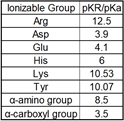Anion exchange chromatography is a technique used to purify negatively charged proteins by utilizing a positively charged stationary phase. This method is essentially the reverse of cation exchange chromatography, where the roles of positive and negative charges are swapped. Understanding one type of ion exchange chromatography allows for a seamless transition to the other by simply reversing the charge interactions.
In anion exchange chromatography, the stationary phase is composed of positively charged resins, such as those containing diethylaminoethyl (DEAE) functional groups. These DEAE groups bind negatively charged anions, including the target proteins that need to be purified. When a protein mixture is introduced into the chromatography column, the negatively charged proteins interact with the positively charged resin, while neutral and positively charged proteins do not bind and thus elute more quickly.
The elution order is determined by the charge of the proteins: positively charged proteins elute first, followed by neutral proteins, while negatively charged proteins remain bound to the resin and move through the column very slowly. The rate of movement for negatively charged proteins is influenced by their net charge; those with a higher negative charge interact more strongly with the resin and elute more slowly than those with a lower negative charge.
To effectively collect the negatively charged proteins, a common strategy involves the addition of salt to the mobile phase. Salt reduces the strength of ionic interactions between the negatively charged proteins and the positively charged resin, facilitating their elution from the column. This method not only speeds up the process but also conserves resources by minimizing the need for excessive mobile phase.
In summary, anion exchange chromatography is a powerful technique for the purification of negatively charged proteins, leveraging the principles of charge interactions to achieve effective separation and collection.



